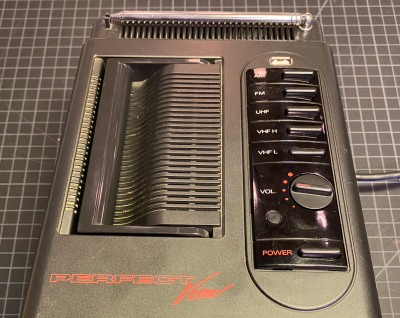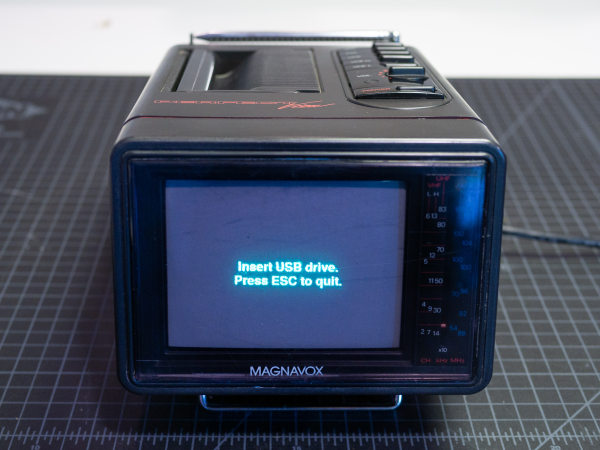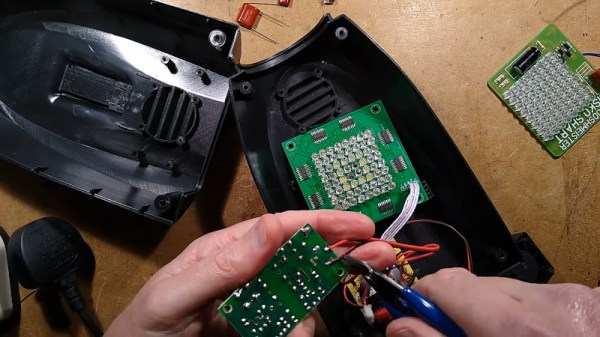We all have handfuls of thumb drives lying around with only a vague idea of what’s on most of them, right? So why not dust one off, back it up somewhere, and give it a new purpose? That’s exactly what [Cher_Guevara] did to make this portable Raspberry Pi video looper. The hardest part of recreating this one might be coming  up with such a good candidate mini CRT TV.
up with such a good candidate mini CRT TV.
Once powered on, the Pi Zero W stuffed inside this baby Magnavox waits for a thumb drive to be inserted and says as much in nice green text on the screen. Then it displays the number of video files found on the drive and gives a little countdown before looping them all endlessly.
We love how flawlessly [Cher] was able to integrate the USB port and a flush-mounted shutdown button for the Pi into the TV’s control panel on the top. It’s like a portable from another timeline.
[Cher] got lucky because this TV happens to have a video-in jack for connecting up the Pi. If yours doesn’t have one, you might be able to use an RCA to RF converter if the antenna is removable. We’ve got the demo video waiting for you after these messages.
Okay, that’s one thumb drive repurposed. Now find another and experiment with adding USB OtG to it.




















